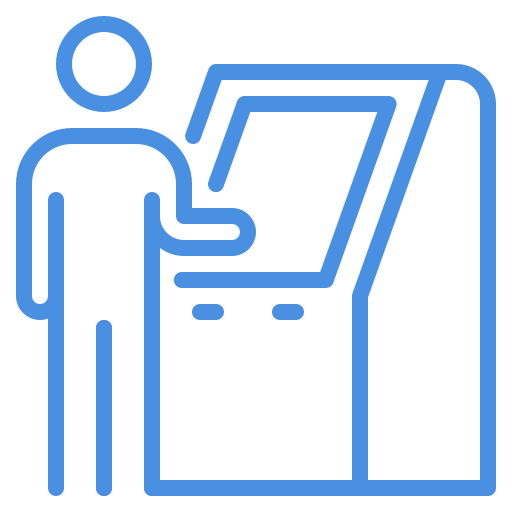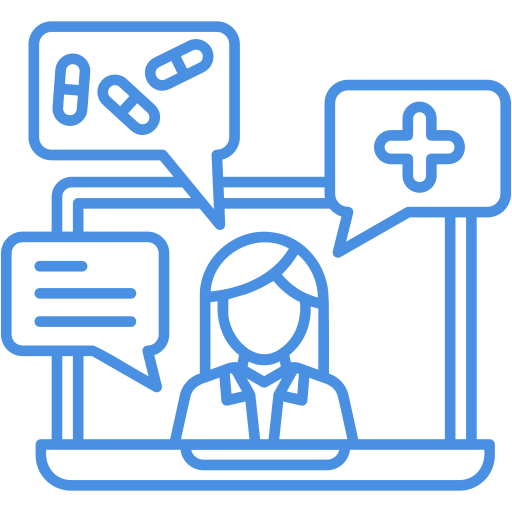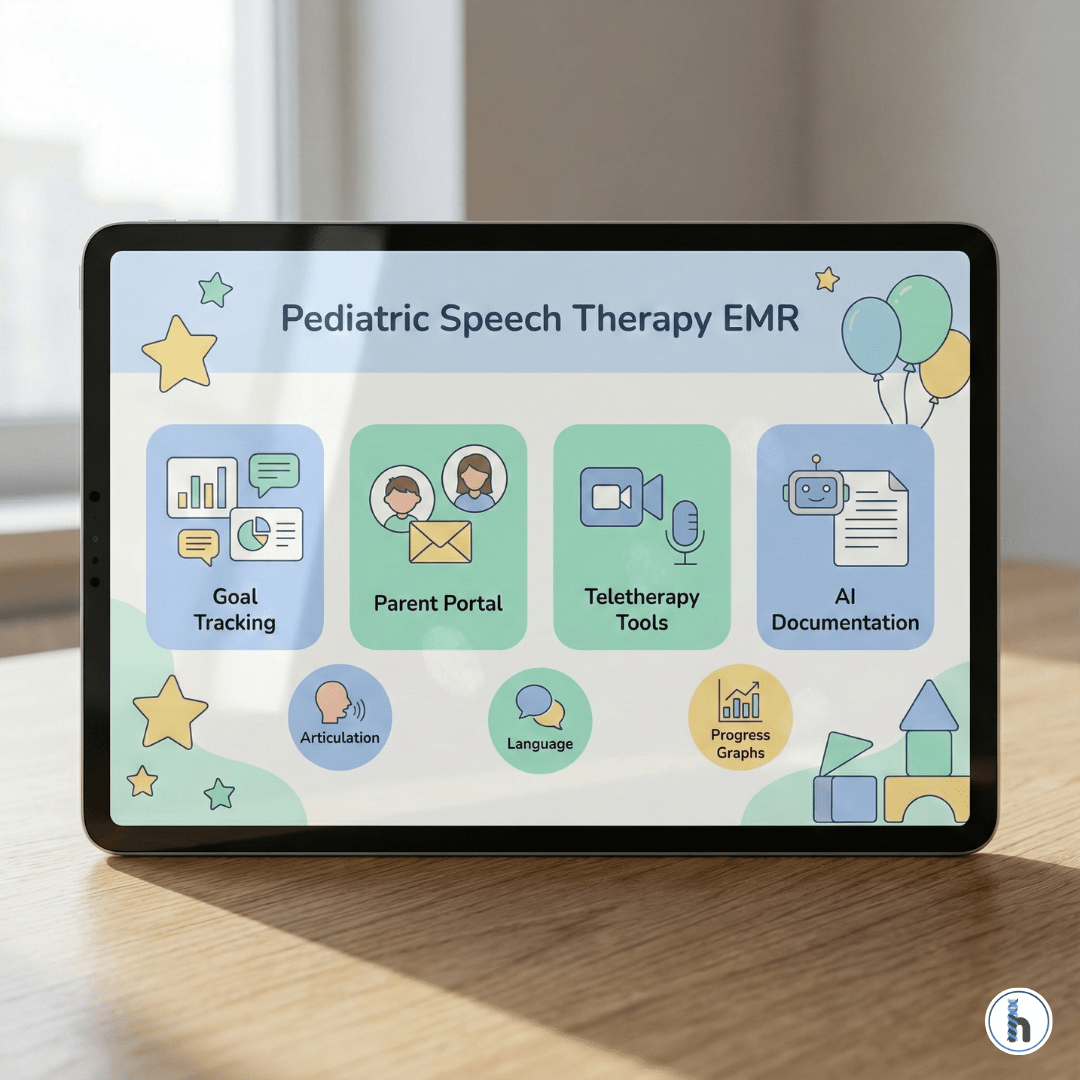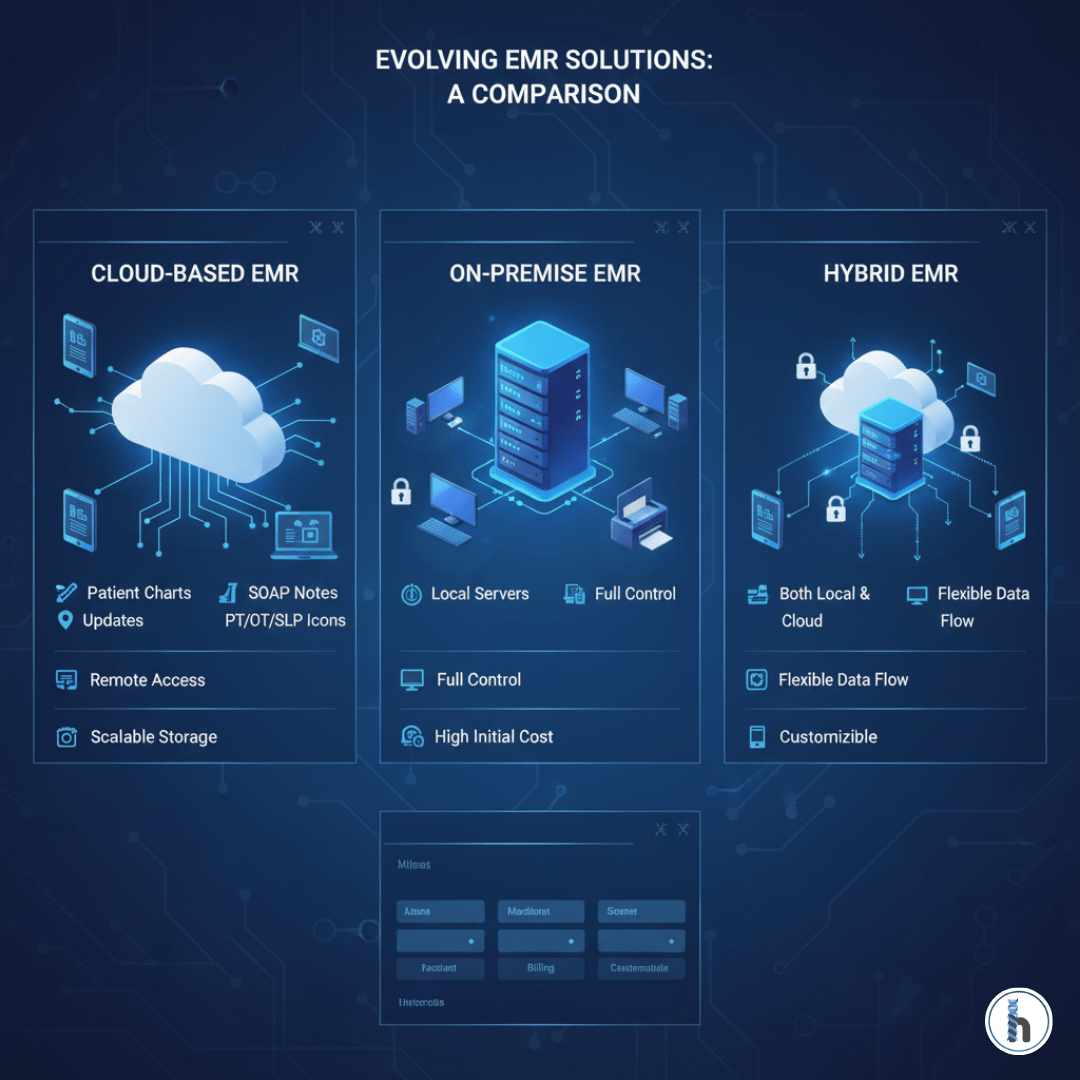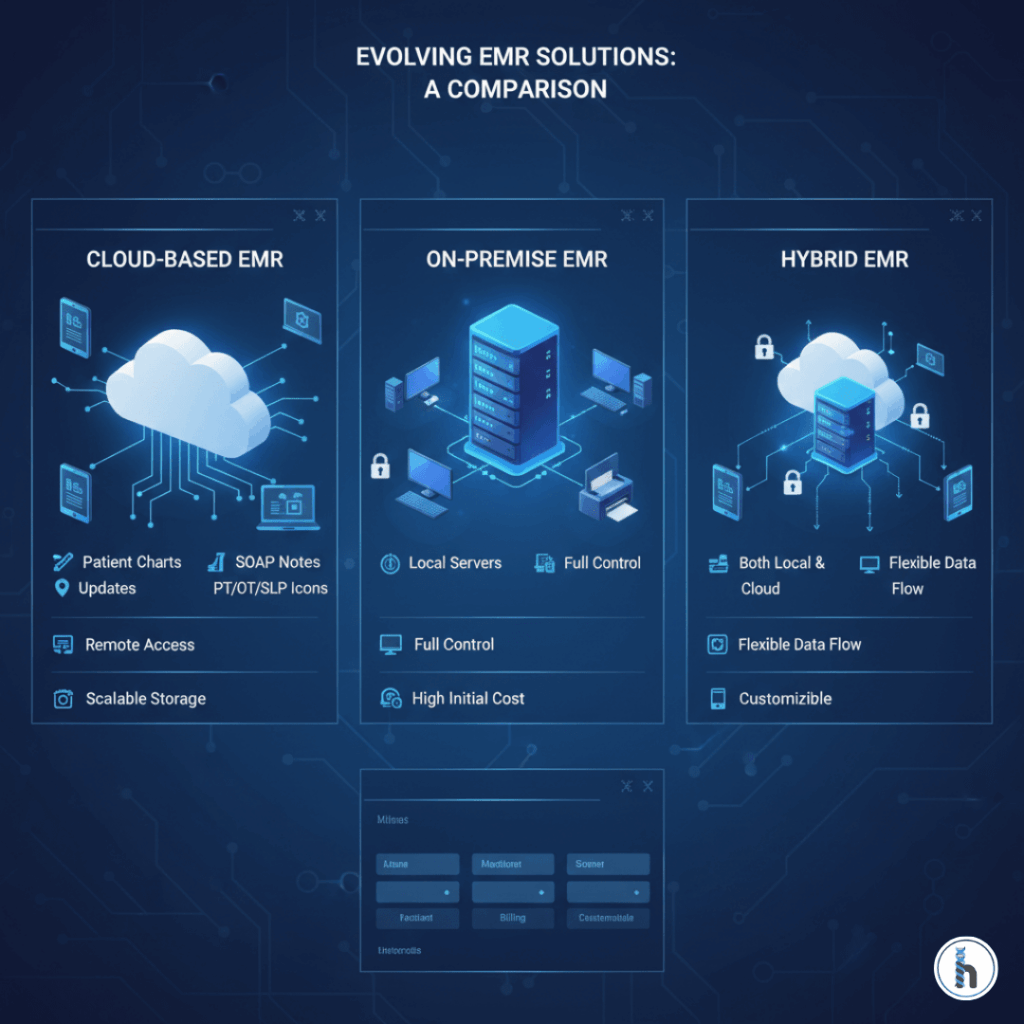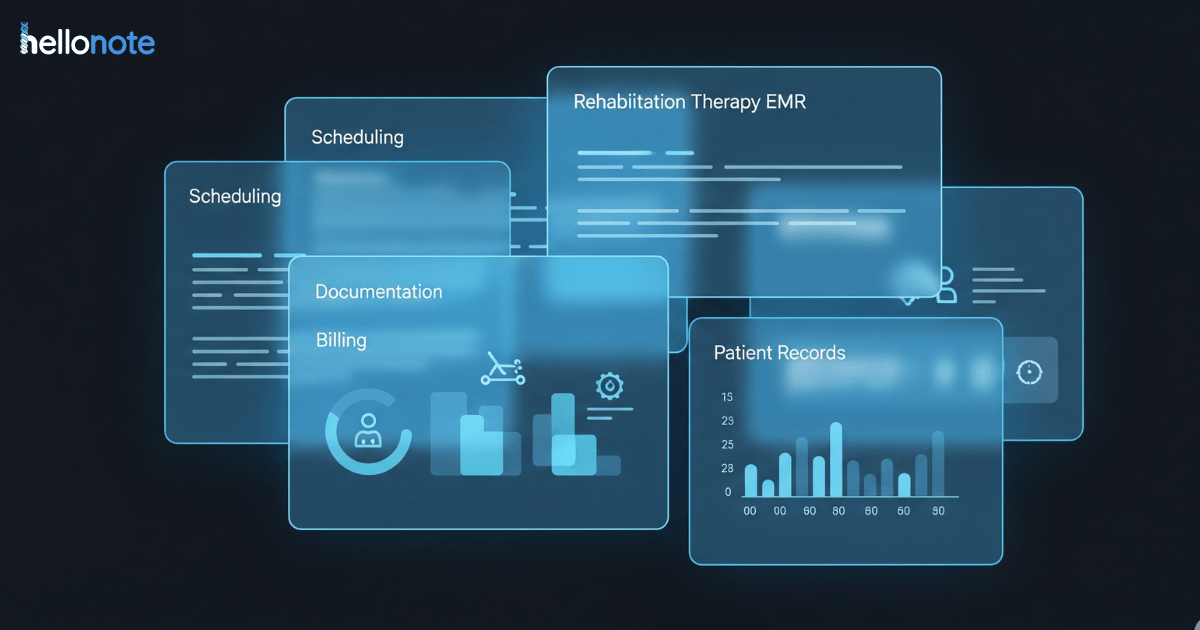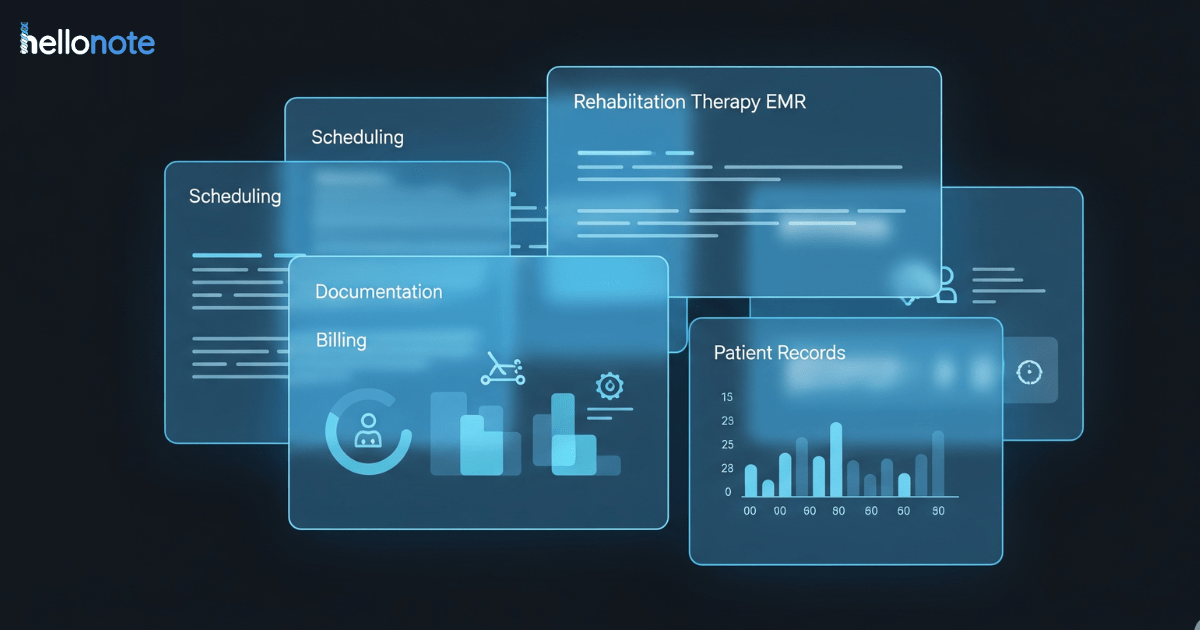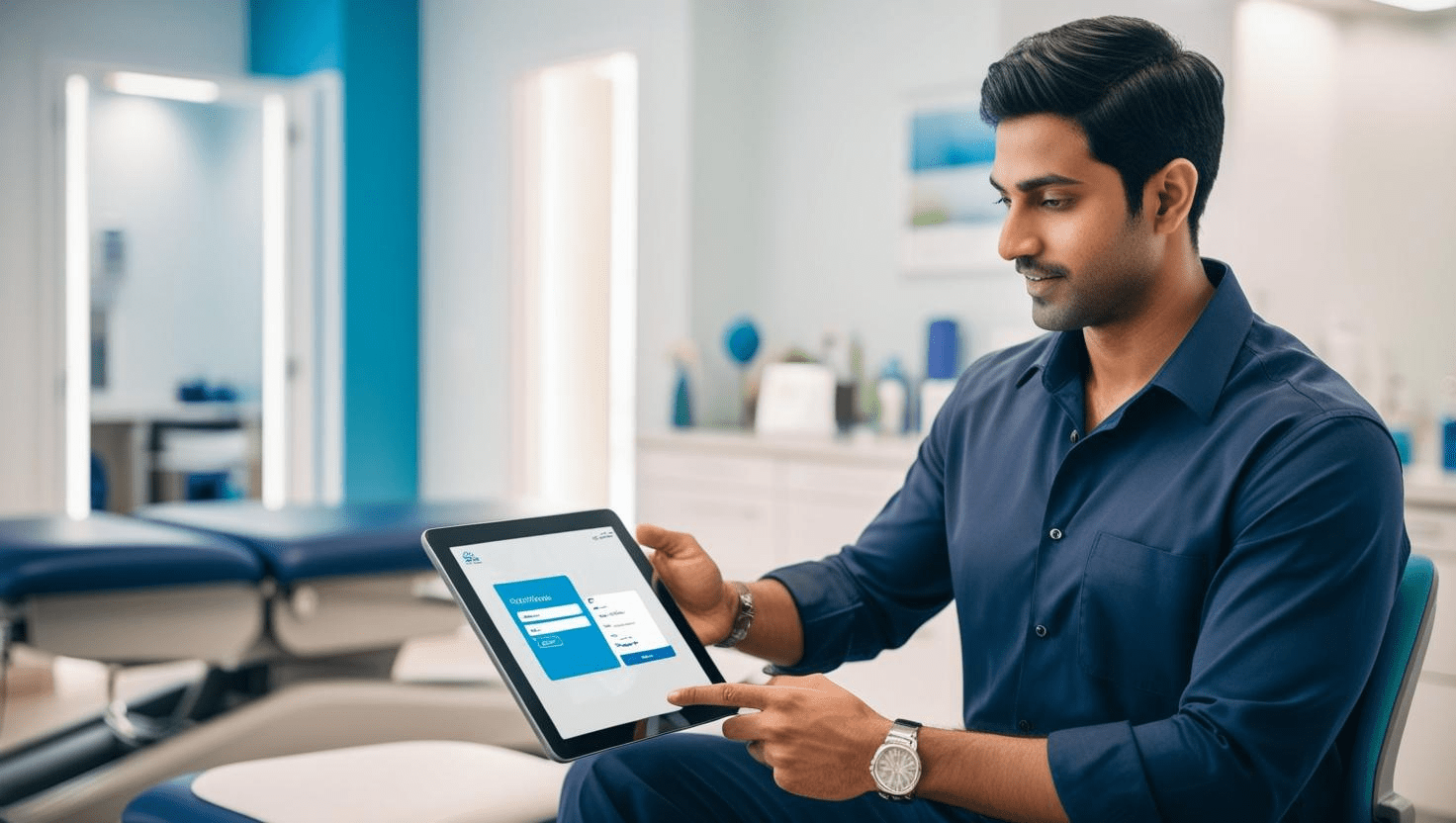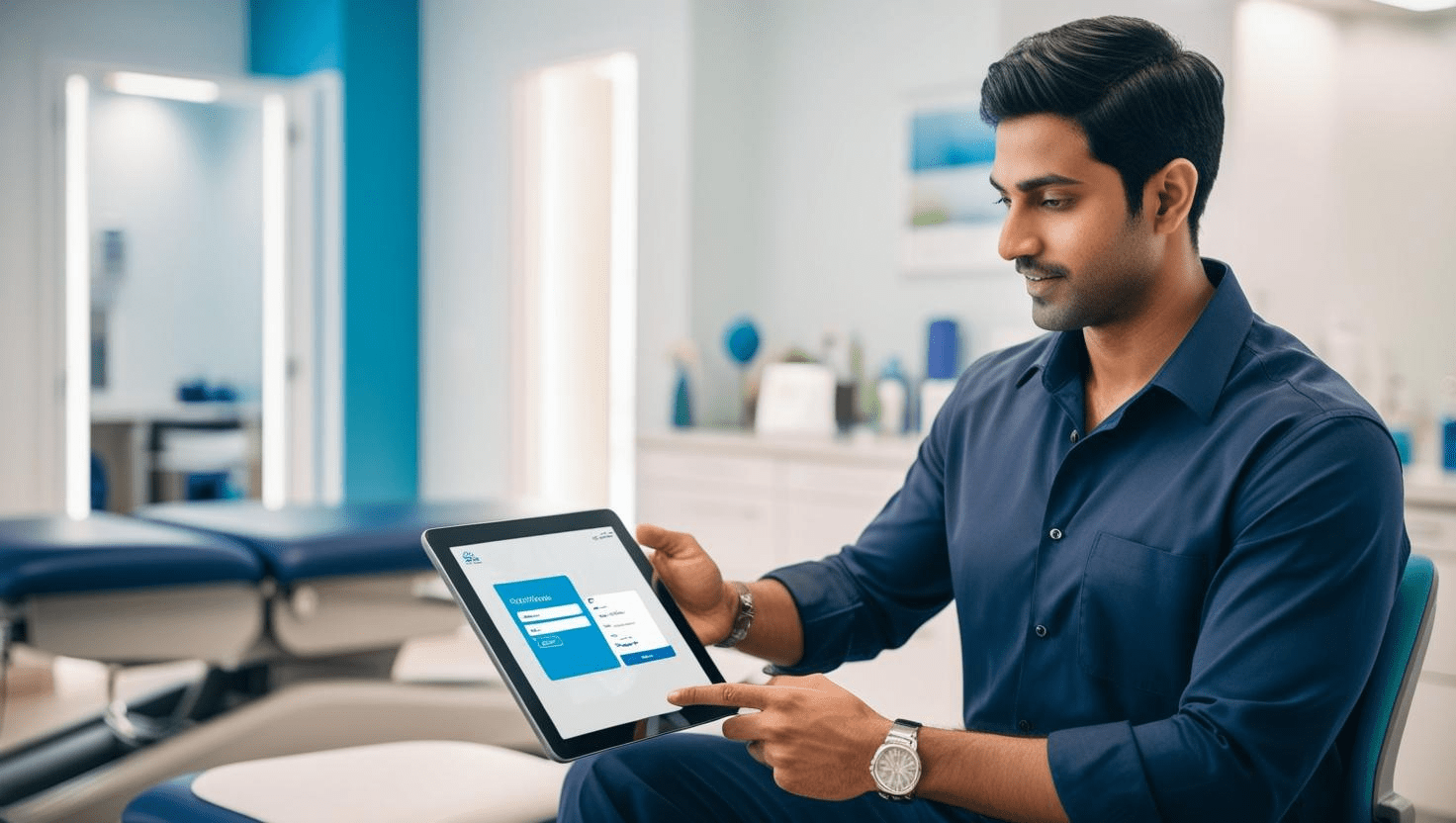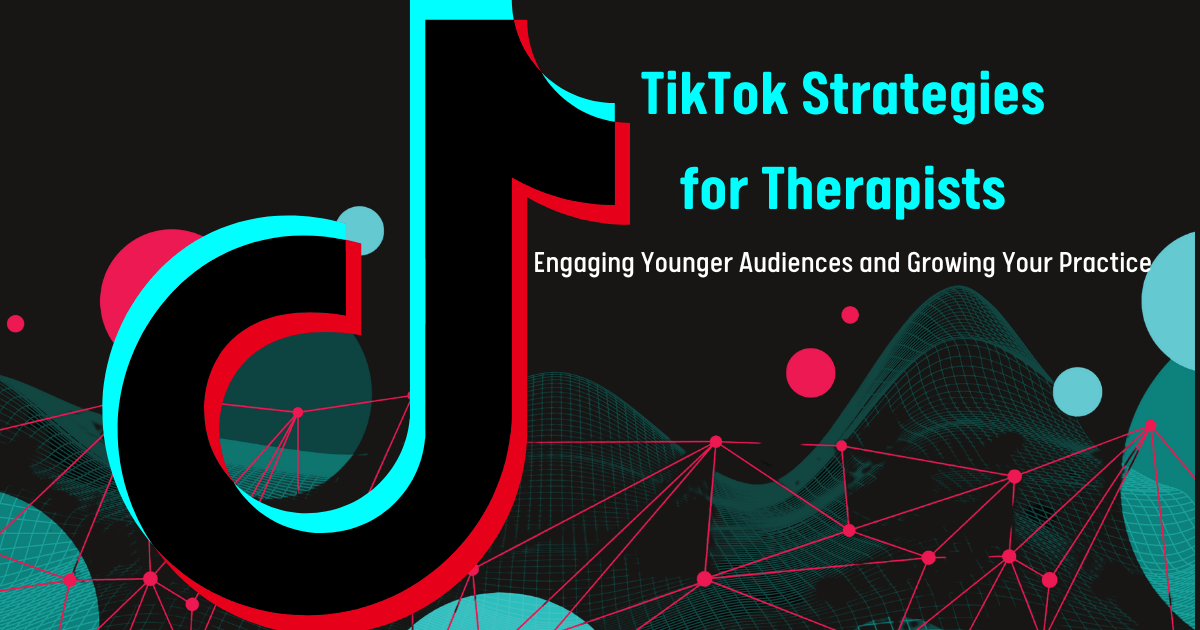5 Essential Features Every Pediatric Speech Therapy EMR Needs in 2026
Pediatric speech therapy EMR systems are becoming essential tools for clinics in 2026, especially as therapy practices face higher caseloads, greater documentation demands, and increased expectations from parents and payers. As pediatric speech therapy continues to evolve, clinicians need EMRs that not only store information but actively support better outcomes, smoother workflows, and more engaging family communication.
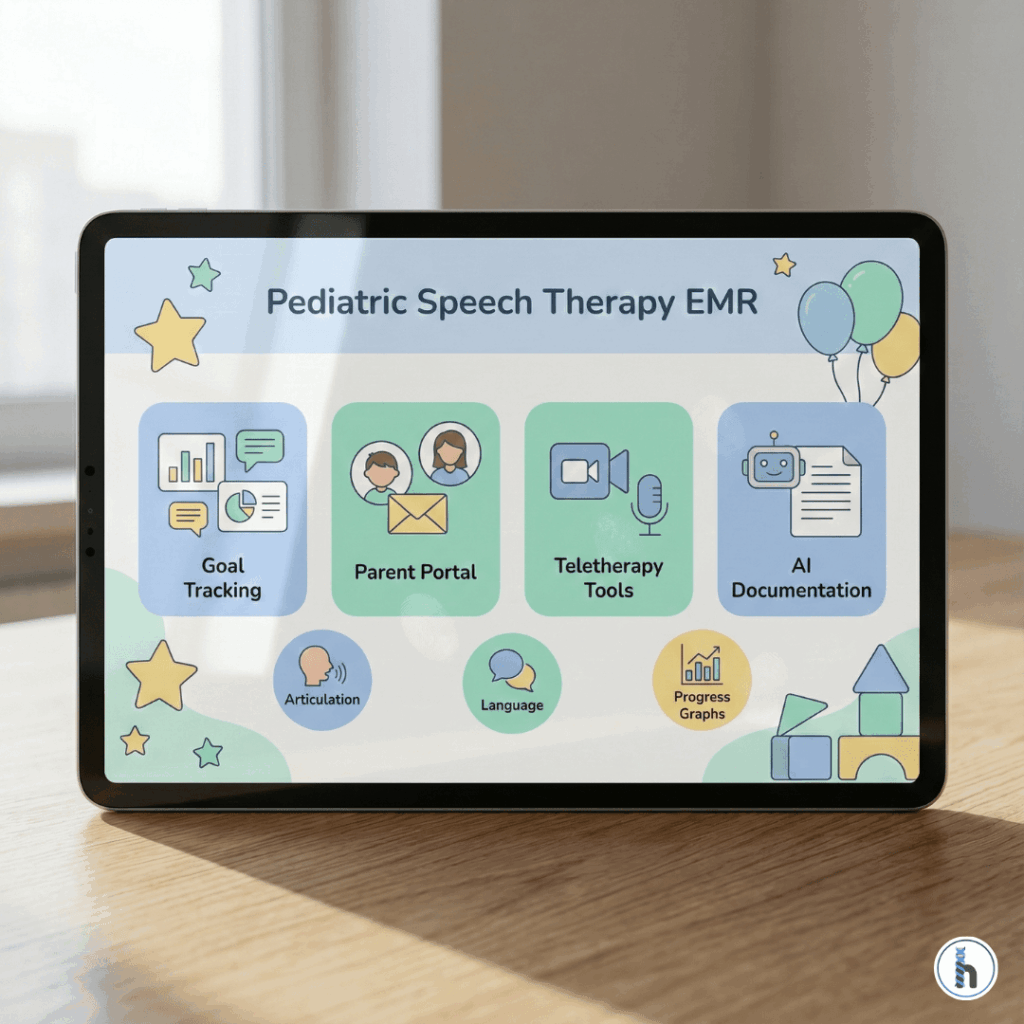
Below are the five essential EMR features every pediatric speech therapy practice should prioritize in 2026, including why each feature matters, what impact it has on clinical care, and how forward-thinking EMRs like HelloNote help practices stay ahead.
1. Integrated Telehealth with Interactive Therapy Tools
Teletherapy has moved from a pandemic workaround to a long-term service model. Pediatric SLPs need EMR-integrated telehealth that supports engagement not just video calls.
A strong 2026-ready telepractice system should include:
Digital whiteboards for modeling, labeling, and visual prompts
Annotation tools to mark articulation targets, phonological patterns, or comprehension items
Parent co-viewing mode for caregiver coaching
Secure, consent-based session recordings for progress monitoring and payer audits
Why it matters:
A strong pediatric speech therapy EMR keeps these tools in one place, and the average pediatric teletherapy session requires 3–4 visual aids.. Moving across apps wastes time and reduces child engagement. Integrated tools keep therapy flowing and reduce distraction.
2. Dynamic Goal Tracking With Visual Progress Metrics
Static goal banks are no longer enough. Pediatric therapists need dynamic progress-tracking dashboards that show change over time not just checkboxes.
A modern pediatric speech therapy EMR should offer::
Automated graphs showing progress by domain (expressive language, articulation, fluency, pragmatic skills)
Visual milestone tracking for speech sound acquisition or language development
Parent-friendly progress summaries
Alerts when goals plateau or require modification
Clinical impact:
When parents see progress presented visually, home practice compliance increases by 22% (ASHA 2024). This is critical in pediatric therapy, where consistency outside the session determines progress speed.
3. AI-Powered Documentation That Actually Reduces Workload
AI has matured significantly and SLP-focused EMRs now use it to support (not replace) clinical judgment.
Tools pediatric SLPs should expect in 2026:
Voice-to-text optimized for speech therapy vocabulary
Smart templates that auto-fill sections based on session activities
Auto-generated SOAP notes pulled from timing, stimuli, and clinician comments
Coding suggestions to prevent insurance denials
Time savings:
Clinicians using AI-supported tools inside a pediatric speech therapy EMR report 35% fewer after-hours charting sessions, reducing burnout and freeing therapists to focus on patient care.
4. Comprehensive Parent Engagement Tools
Pediatric therapy is a collaborative process. Families need access to home practice materials, progress reports, and communication tools.
Your EMR should include:
Home exercise programs with video demos for articulation, oral-motor work, AAC modeling, etc.
Secure messaging with read receipts
Appointment and home-practice reminders (SMS or app-based)
A parent resource library (handouts, modeling videos, strategies)
Why it matters:
Parent engagement is the single biggest predictor of pediatric therapy success. Clinics using integrated parent portals see 40% higher home-program completion rates, leading to faster progress.
5. Interoperability With Pediatric Ecosystems
Pediatric providers don’t work alone. SLPs must collaborate with:
Early intervention programs
School IEP teams
Pediatricians
Occupational and physical therapists
AAC specialists and device manufacturers
In 2026, your EMR should be able to exchange data securely with these systems through:
HL7/FHIR interoperability
Secure eFax or digital transfer tools
Compatible formats for school and EI documentation
Compliance note:
Payers increasingly expect complete documentation across systems. Without interoperability, clinics waste hours faxing, scanning, and re-entering data.
Implementation Considerations for Pediatric SLP Clinic Owners
✔ Request pediatric-specific demos
General EMRs are not built for speech therapy workflows.
✔ Test documentation tools with real cases
You’ll quickly see whether the system supports you—or slows you down.
✔ Confirm pediatric billing compatibility
Speech therapy billing rules differ from OT/PT and require accuracy.
✔ Check mobile/tablet functionality
A 2025 survey found 67% of pediatric SLPs use tablets during sessions.
How HelloNote Supports Pediatric Speech Therapy in 2026
HelloNote is designed with therapy workflows at the center—especially pediatric SLP needs.
Key advantages include:
Interactive telehealth tools built into the platform
Pediatric-specific documentation templates and goals
Parent engagement and secure messaging
Automated progress tracking visualizations
Direct transmission of documentation to schools and physicians via eFax
Compatibility with AAC device documentation and early intervention workflows
By reducing redundant clicks and simplifying documentation, HelloNote allows SLPs to focus more on children and less on paperwork.
The Bottom Line for Pediatric SLP Practices in 2026
Upgrading your EMR isn’t just a technology decision it directly impacts:
Therapist workload and burnout
Speed and accuracy of documentation
Parent engagement and home carryover
Therapy outcomes
Revenue cycle efficiency
Data compliance and interoperability
Pediatric practices that adopt EMRs with specialized speech therapy tools will deliver better outcomes, retain their clinicians longer, and run more efficient operations.
As you plan your 2026 technology upgrades, prioritize a pediatric speech therapy EMR that grows with your practice while solving today’s specific challenges in pediatric speech therapy service delivery.
A pediatric speech therapy EMR should include integrated teletherapy tools, AI-supported documentation, dynamic goal tracking, parent engagement portals, and secure data sharing with early intervention and school systems.
The best EMR is one designed for therapy workflows offering pediatric-specific templates, progress visuals, built-in telehealth, and simplified documentation. Many SLPs prefer platforms like HelloNote because they reduce charting time and support parent involvement.
An EMR improves documentation by providing structured templates, auto-generated note assistance, smart goal tracking, and voice-to-text tools tailored to speech therapy terminology, helping clinicians complete notes faster and more accurately.
Yes. Teletherapy remains a core service model, and clinics benefit from EMR-integrated features like digital whiteboards, annotation tools, parent co-viewing, and secure recordings to support high-quality online sessions.
Parent portals enhance communication and promote home practice by giving caregivers access to session summaries, progress metrics, videos, reminders, and secure messaging. This leads to higher engagement and faster child progress.





